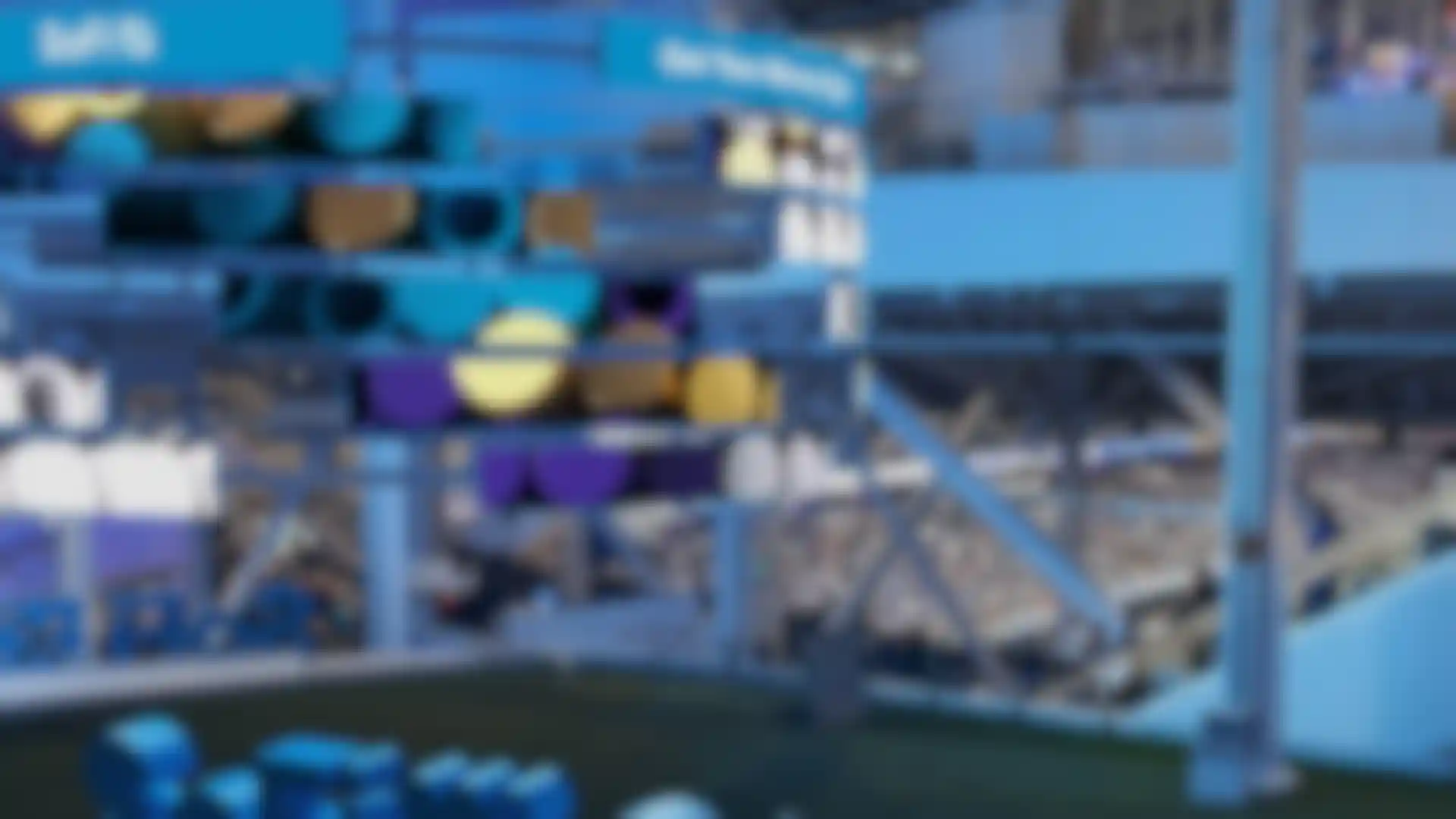
Turning Limitations into Opportunities How Unsaid Studio combined 3D, physics and experimentation to gamify SoFi Stadium’s unique cylindrical screen.
With Super Bowl LVII set to kick off in February at State Farm Stadium in Glendale, Arizona, let’s take a look back at the impressive 3D visuals Unsaid Studio created for Los Angeles’ SoFi Stadium just in time for last year’s game.
Troika asked Unsaid to create abstract 3D visuals that needed to fit with the stadium’s brand while also working in tandem with a new multidirectional, cylindrically shaped screen. We talked with Unsaid Cofounder and Executive Creative Director Tom Alex Buch about how the team used Cinema 4D to tackle the uniquely challenging project that melded branding, art and imagination
Can you tell us a little bit about how Unsaid landed this project?
Buch: We were contacted by Gil Haslam, a creative director at Troika who runs an account with SoFi. Troika is in charge of a lot of the screens and branding at the SoFI stadium, and they needed some 3D motion/creative help exploring the potential of the unusually shaped screen.
The brief asked for two things: some ambient branded looping designs that were totally open, as well as others that were more conceptual and connected to a story. The visuals needed to feel kinetic and playful, and the goal was to capture the attention of passersby and create some intrigue.

That’s a lot to do. How did you work through all of that as a team?
Buch: The brand has very strict guidelines, and it took several months and many rounds of creative feedback and changes to get things right. We did most of our experimentation and concepting in the first couple of weeks. With this kind of project, it’s best to cast a wide net before narrowing your focus.
SoFi is an investment company but has approachable branding, bold bright colors and a logo that includes a lot of cylinders and circles. By turning the limitations of the screen into opportunities, we broke boundaries with simulated physics and visual experimentation.
Cinema 4D was our creative sandbox for favorite designs in the project. Once the logo was turned into rollable spheres and 3D cylinders, it was game time for whatever crazy setup we could come up with within the screen’s shape.
We explored toy-like simulated physics, specifically taking inspiration from pinball, Plinko and golf to gamify the screen. The randomness of balls that bounce off the boundaries of the screen also has the bonus of being oddly satisfying.
Say more about how the screen’s unconventional shape and size affected the project’s design?
Buch: The hardest part of the project early on was previewing the screens all together in their cylindrical format. The aspect ratio of each individual screen and render was insane, and to get the bigger picture and preview the work required stitching everything together.
Once we modeled the screen in 3D, Cinema 4D made it easier to preview everything. Really, though, the roadblocks we encountered just helped us find a creative solution and over time the screen became our creative muse.
As creatives, the end goal is always the output, the quality of the work and how it speaks to the viewer. What we do is quite complex; it’s very easy to get stuck in the technical side of things, tweaking numbers. But with C4D it has always been easier to reach “flow state” and make creative decisions rather than getting bogged down with technical details.

How did this project differ from past Unsaid Studio projects?
Buch: Every project is different, and we like it that way! This was our first experiential completely on-site job for an events space. Our work normally goes to TV or the web, and we hope to do more of this kind of work.







